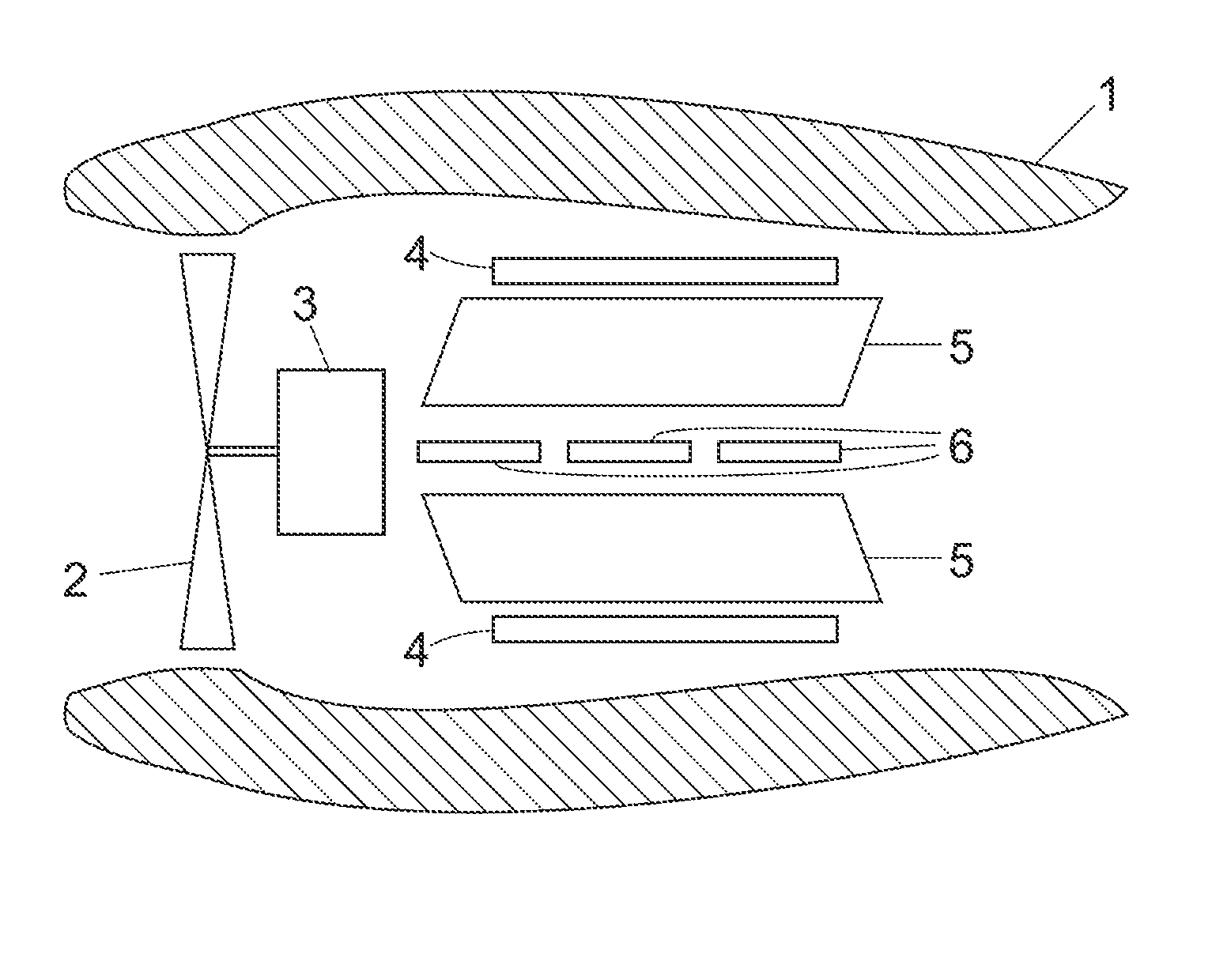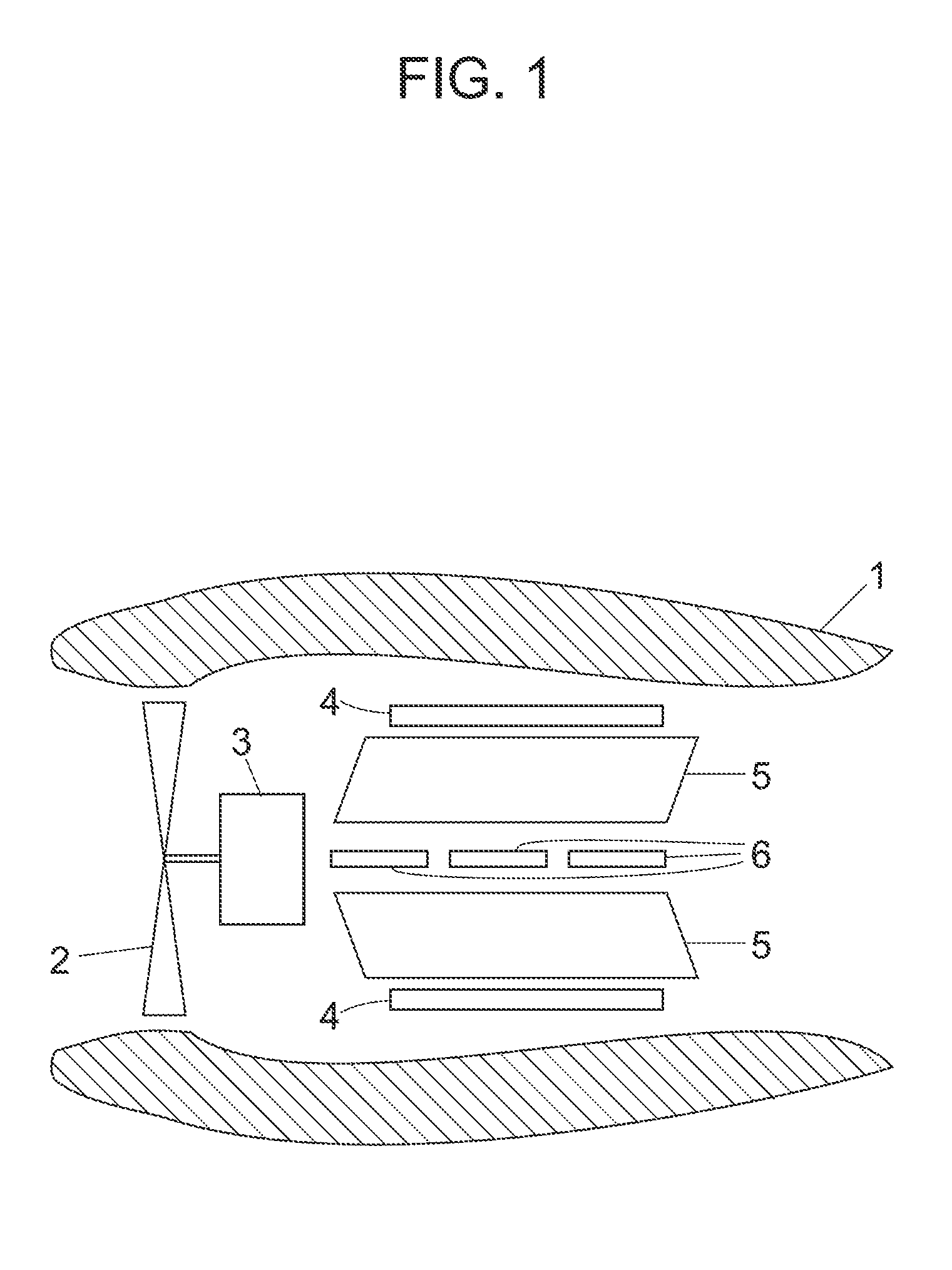Hybrid radiant energy aircraft engine
- Summary
- Abstract
- Description
- Claims
- Application Information
AI Technical Summary
Benefits of technology
Problems solved by technology
Method used
Image
Examples
Embodiment Construction
Definitions
[0030]The following definitions are provided for the full understanding of terms used in this specification.
[0031]As used herein, the article “a” means “at least one,” unless the context in which the article is used clearly indicates otherwise.
[0032]As used herein, “thermophotovoltaic cell” means any material capable of converting radiant energy into electricity. These cells are sometimes referred to as photovoltaic cells or concentrator photovoltaic cells.
[0033]As used herein, “thermoelectric cell” means any material capable of converting a temperature differential directly into electricity.
[0034]As used herein, “duct” means a housing having a basically cylindrical shape, having a hollow center section, having mounting tabs for internal components, and having contours that promote the acceleration of the fan and heated air, and having structural components that allow attachment to the aircraft and transmission of thrust forces.
[0035]As used herein, “cold mirrors” means a...
PUM
 Login to View More
Login to View More Abstract
Description
Claims
Application Information
 Login to View More
Login to View More - R&D
- Intellectual Property
- Life Sciences
- Materials
- Tech Scout
- Unparalleled Data Quality
- Higher Quality Content
- 60% Fewer Hallucinations
Browse by: Latest US Patents, China's latest patents, Technical Efficacy Thesaurus, Application Domain, Technology Topic, Popular Technical Reports.
© 2025 PatSnap. All rights reserved.Legal|Privacy policy|Modern Slavery Act Transparency Statement|Sitemap|About US| Contact US: help@patsnap.com



